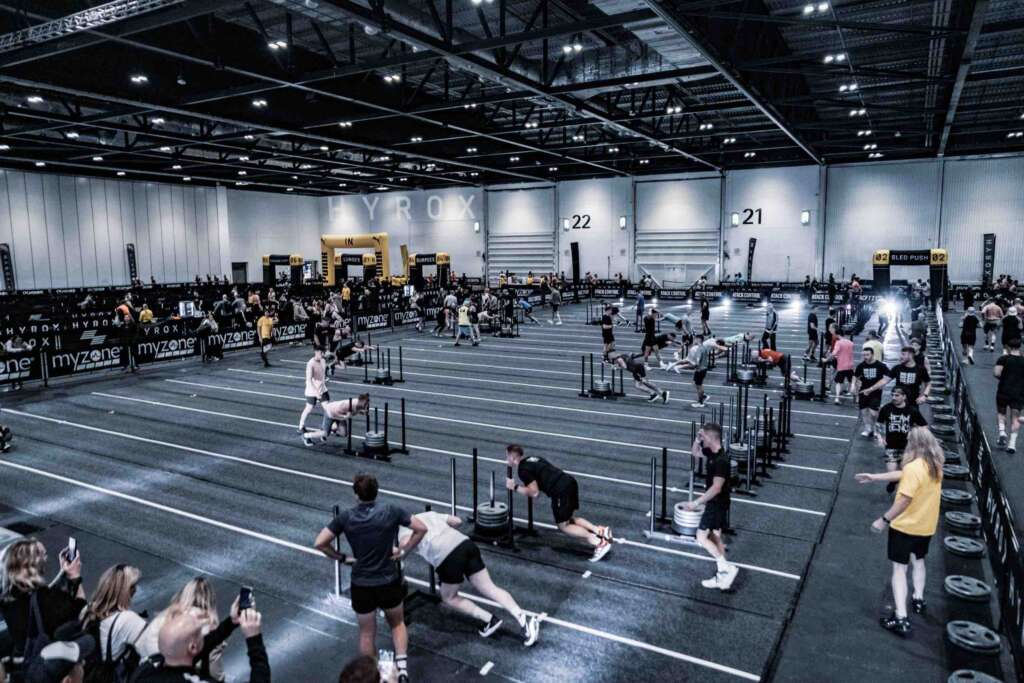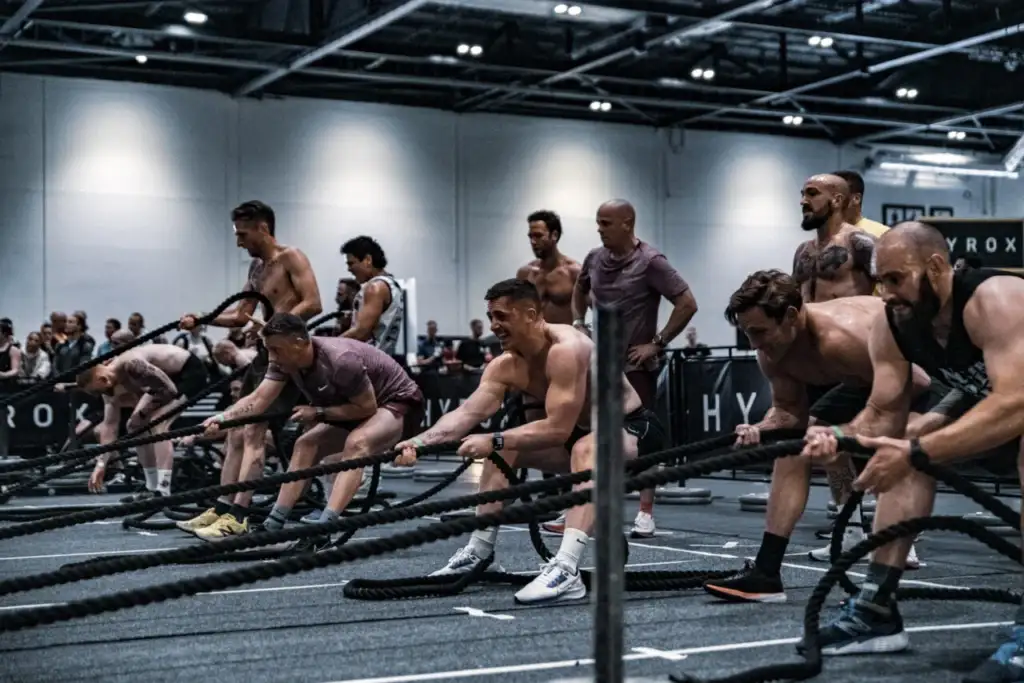You’re standing at the start line. The air around you crackles with adrenaline and anticipation. Thumping music blares out of every speaker. The crowd are going wild with deafening screams of encouragement. The lights flash on and off as the final countdown begins. It’s time. But are you ready?
Hyrox events have taken the fitness world by storm, but it’s not just another fitness competition: it’s a unique blend of running and functional exercises designed to test your speed, strength, endurance and, most of all, your mental grit , determination and resilience.
To help you smash your next Hyrox event here’s everything you need to know to ace your race, including a free six-week Hyrox training plan to get you fitter, faster and stronger.
Is a Hyrox event right for you? Do you have more time to train before your next Hyrox event? Check out our eight-week plan. Short of time to get into Hyrox shape? Use our four-week plan!
What is Hyrox training?
Hyrox is a competitive fitness event that combines running with functional exercises. Participants complete eight different workouts, each followed by a 1-kilometre run, totalling 8 kilometres of running and eight workout stations. The exercises include movements like sled pushes, rowing, burpee broad jumps, and wall balls, testing overall fitness, endurance, and strength. The goal is to complete the course as quickly as possible, making it a race against the clock.
Do I compete alone or in a team?
In Hyrox events, you have the flexibility to compete solo, in doubles, or as part of a relay team. Solo participants tackle the entire course on their own, while doubles teams share the workload, alternating between running and exercises. Relay teams can further divide the course, making it a versatile and inclusive event suitable for all fitness levels.
How can I prepare for a Hyrox event?
Preparing for a Hyrox event requires a balanced training approach that includes both running and functional fitness exercises. Start by assessing your current fitness level and setting realistic goals. Incorporate a mix of aerobic and anaerobic training to build endurance and strength. Running should be a staple of your training, with both long-distance runs and interval training. Complement this with functional exercises such as sled pushes, rowing, and burpees to simulate the event’s workout stations. Focus on high-intensity interval training (HIIT) to boost your stamina and recovery ability. Additionally, ensure your training includes proper nutrition, hydration, and recovery strategies to optimise performance.
Six-Week Hyrox Training Plan

Week 1: Building Base Fitness
- Monday: Long run (5 km at a steady pace)
- Tuesday: Functional strength training (focus on full-body exercises: squats, deadlifts, pull-ups)
- Wednesday: Interval running (8 x 400m at race pace with 1-minute rest)
- Thursday: Rest or light activity (yoga, stretching)
- Friday: HIIT workout (20 minutes of burpees, sled pushes, and rowing)
- Saturday: Tempo run (5 km at a moderately hard pace)
- Sunday: Rest
Week 2: Increasing Intensity
- Monday: Long run (6-8 km at a steady pace)
- Tuesday: Functional strength training (add weights to exercises)
- Wednesday: Interval running (6 x 500m at race pace with 90 seconds rest)
- Thursday: Rest or light activity
- Friday: Hyrox circuit (3 rounds of 10 burpees, 500m row, 20 wall balls, 200m farmer’s carry)
- Saturday: Fartlek run (6 km with varying paces)
- Sunday: Rest
Week 3: Enhancing Endurance
- Monday: Long run (8-10 km at a steady pace)
- Tuesday: Functional strength training (focus on event-specific exercises)
- Wednesday: Interval running (5 x 800m at race pace with 2-minute rest)
- Thursday: Rest or light activity
- Friday: Hyrox circuit (4 rounds of 10 burpees, 500m row, 20 wall balls, 200m farmer’s carry)
- Saturday: Easy run (5 km at a relaxed pace)
- Sunday: Rest

Week 4: Building Peak Fitness
- Monday: Long run (10-12 km at a steady pace)
- Tuesday: Functional strength training (high intensity, focus on event-specific exercises)
- Wednesday: Interval running (4 x 1 km at race pace with 3-minute rest)
- Thursday: Rest or light activity
- Friday: Hyrox simulation (complete a full Hyrox workout circuit)
- Saturday: Easy run (6-8 km at a relaxed pace)
- Sunday: Rest
Week 5: Peak Week
- Monday: Long run (12-15 km at a steady pace)
- Tuesday: Functional strength training (focus on event-specific exercises)
- Wednesday: Interval running (4 x 800m at race pace with 2-minute rest)
- Thursday: Rest or light activity
- Friday: Hyrox simulation (complete a full Hyrox workout circuit)
- Saturday: Easy run (5 km at a relaxed pace)
- Sunday: Rest
Week 6: Race Week
- Monday: Long run (8-10 km at an easy pace)
- Tuesday: Light functional strength training (low intensity, focus on form)
- Wednesday: Interval running (4 x 400m at race pace with 2-minute rest)
- Thursday: Rest or light activity (gentle yoga, stretching)
- Friday: Light Hyrox circuit (2 rounds of event-specific exercises at a moderate pace)
- Saturday: Rest or very light activity (short walk, stretching)
- Sunday: Hyrox Competition




